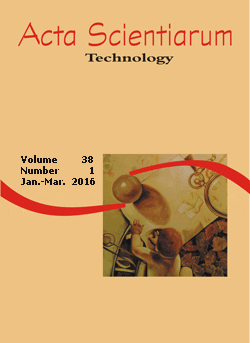<b>Quality of coffee cultivated in Campos Gerais, Minas Gerais
DOI:
https://doi.org/10.4025/actascitechnol.v38i1.26445Keywords:
Coffea arabica, physical and chemical analysis, raw coffee, roasted coffeeAbstract
Coffee quality can be defined as a set of physical, chemical, sensory and safety attributes that meet consumer taste preferences. Coffea arabica is the most cultivated species, accounting for 70% national and world production of coffee. The present study analyzed 6 coffee samples from 6 different regions in the municipality of Campos Gerais, subjected to the treatments raw and roasted, in order to assess their physical and chemical quality based on the parameters of titratable acidity, pH, moisture, soluble solids content and caffeine content. All the samples met the standard of at least one of the quality parameters studied. The best value of total acidity in roasted coffee was observed in the Grupiara region. The raw coffee of the Galo region presented the best quality as to the pH. The sample of the Prata region showed the highest caffeine content related to the quality of raw and roasted coffee, the best content for total acidity for raw coffee and the best pH value for roasted coffee. Therefore, the coffee of the Prata region is considered the best quality coffee analyzed in this study.
Â
Downloads
Downloads
Published
How to Cite
Issue
Section
License
DECLARATION OF ORIGINALITY AND COPYRIGHTS
I Declare that current article is original and has not been submitted for publication, in part or in whole, to any other national or international journal.
The copyrights belong exclusively to the authors. Published content is licensed under Creative Commons Attribution 4.0 (CC BY 4.0) guidelines, which allows sharing (copy and distribution of the material in any medium or format) and adaptation (remix, transform, and build upon the material) for any purpose, even commercially, under the terms of attribution.
Read this link for further information on how to use CC BY 4.0 properly.











8.png)




